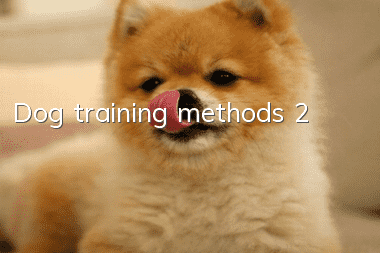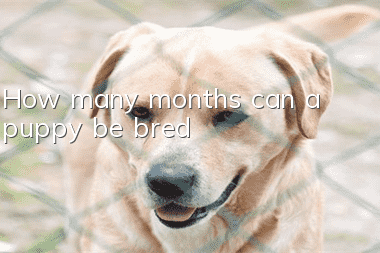Dog training methods 2

How to train a dog to be obedient? Our puppies must be taught to obey commands from an early age. Just like the rules in a child's home. Only in this way can we adapt to daily life and everyone can get along happily. First, we need to strengthen some basic training. For example, some dogs bark when they hear someone walking outside the door; they bark when there are too many people coming in and out; and they bark as usual when there is movement at night, waking people up from their sleep. When this happens, you should immediately grab its mouth with your hands, shake your head and say "No". After trying it a few times, it will understand what it means and will not bark randomly because someone is passing by outside. Secondly, attention should be paid to strengthening training, especially those prohibited behaviors. The methods are similar. For example, some puppies like to chew furniture, tablecloths, and potted plants. We lose our temper, hit and kick it, but it doesn't help. You should pull it away immediately, close its mouth with one hand, and say "no" or "NO" in a stern voice. The tone must be strong, never appear weak, and never turn a blind eye or be conciliatory. It is worth reminding that when a dog exhibits the above behaviors, if you touch it with your hands and speak gently, it will misunderstand it and think it is encouragement. Basic obedience training for dogs. Due to different temperaments of various dogs, training may be easy or difficult. However, as long as your dog is properly trained, he will be obedient regardless of whether he is on a leash or not. Generally speaking, dogs should start formal obedience training when they are six months old, but some dogs can start earlier, while others grow later. Training not only requires patience and control from the trainer, but also requires patience and control from the dog. If you have little or no experience with dog problems, it is best to ask a veterinarian or local breeder club to recommend an experienced dog trainer for guidance. 1. Train the dog to wait and come over A. Use a simple gesture to ask the dog to sit down. Whenever you want to teach your dog something new, command it to sit first to ensure that it has its full attention. B. After the dog sits down, he can issue the second command "Wait a minute". At the same time, walk around the dog while holding the leash to see if it stays seated. C. Walk in front of the dog, back up until the leash is straightened, and repeat the command "Wait a minute" at the same time. If the dog moves, go back and practice again. D. Say "come here" immediately after calling the dog's name. Praise or let your dog sit before letting him sit. 2. Train the dog to maintain a down position. A. The dog was originally sitting. At this time, he gave the command "get down" and patted the ground gently at the same time. In training obedience, start by using both voice commands and eyes. B. Pull on the leash to enhance the effect of the command if necessary. At the same time, the command "Don't move" was issued. You can use this command when you want your dog to stay down before you return to it. C. Walk forward as far as the length of the leash and turn around to face the dog. If the dog wants to move at this time, you can use the palm of your hand to indicate it and continue to strengthen the meaning of "don't move". D. Return to the dog in about a minute and see if it continues to lie down. An obedient dog will not move even if the trainer walks away. This kind of training can strengthen the dog's obedience to the owner's commands. E. Release the dog from a certain posture. Praise after every practiceA bit of a dog. Make it clear that the exercise ends here. With a touch and a few words of praise, most dogs will feel very happy and willing to accept various trainings obediently. Correcting Dog Biting Problems A dog that is usually very docile and not aggressive towards people suddenly becomes very unfriendly to the owner's children at a certain period, and even barks and bites them, causing the children to be frightened and injured. The reason is mainly due to the dog's jealousy. To correct this kind of behavior, we cannot use punishment, but care and reward to achieve satisfactory results. Otherwise, it will be counterproductive. The specific method is: when the child is away, the owner should neglect the dog, or even ignore it completely. When the child is with the dog, the owner should express concern and caress for the dog, and feed it a piece of delicious food. Repeat several times a day. Next time, the dog will gradually develop into a child. The presence of the child can also help it get the owner's care and caress, so that it can live in harmony with the child and no longer attack. Furthermore, some children are unfriendly to dogs and often beat and kick them, which is also a reason for dogs to attack children. This requires guiding them to get along with dogs in a friendly manner. Toddlers should not be left alone with dogs to prevent accidents. If it is found that the dog attacks other children, the dog should be strictly restrained, such as tethered, until it is properly trained. Dogs that cannot be corrected through training must be eliminated resolutely. Let the dog understand that it is happy and safe to be with its owner. The so-called dog that can coexist with humans refers to a dog that has learned the rules of human society. The so-called human society refers to the owner's family and the surrounding environment. Living in an urban apartment and living in a detached house in the mountains far away from the world, the environment is naturally different, and the rules of life are also different. In an urban environment, there are definitely "do's" and "don'ts". Teaching a dog some rules is called "training". "Training" does not mean "reprimanding". This point is very important. In human society, scolding children can easily cause them to develop a rebellious mentality, not to mention dogs who cannot speak to humans. Therefore, it is difficult to achieve the effect of training a dog only by scolding, and it will lead to the other extreme, making the dog think that people are not trustworthy. Some people believe that verbal lessons are less effective than corporal punishment. So, when the dog is disobedient, kick or hit it. In this way, for dogs, it is tantamount to threatening their life safety, so they have a rebellious mentality. In this way, the original purpose of training is lost. Although dogs are smart animals, they cannot learn immediately after being taught once. Rather, it should be taught patiently over and over again. It is necessary to put an end to a series of bad behaviors such as reprimands and corporal punishment. Those who are good at training dogs often make dogs understand that they are happiest and safest with their owners. In order not to make the dog confused by the family's commands, or to doubt the rules and make him feel uneasy, the whole family should have a unified opinion. (1) The whole family comes together to formulate a unified rule. Reach a consensus on the standards for what is "doable" or "not doable" when training dogs. For example, for questions such as whether dogs can sit on the sofa, a unified answer must be formed based on the different environments and conditions of each family. ifIt’s a rule that the whole family makes together. There are no obstacles to implementation. (2) Passwords must use the same language. In obedience training (to be published soon), the command is the signal for the dog to obey. Therefore, the whole family should use unified passwords to achieve good results. For example, when telling a dog to sit down, whether to use "sit", "squat down" or "sitdown", the whole family should use a common command. Short, clearly pronounced sentences are easier for dogs to understand. Therefore, try to choose sentences of this type. (3) When reprimanding a dog, do not call the dog’s name. When a dog does something "not allowed to be done", have you ever scolded the dog by its name, for example: "Dongdong, you bad thing"? In this way, it creates a conditioned reflex for the dog. When his name is called, he will definitely be scolded. Therefore, when the dog's name is called again, it will ignore it or even run away. During the training process, calling the dog's name should be limited to giving orders or praising the dog. In this way, the dog will think that "name" is something that makes it "happy". When you call it, it will immediately run to you.
Random articles
- How to feed a newborn puppy
- Symptoms of indigestion in dogs
- What does it mean when a dog’s ears droop down?
- How to get an Alaskan to return to the kennel? Training the Alaskan!
- How to train a Scottish Terrier
- Why do pets suffer from constipation and how to solve it
- Does shaving your pet's hair really make them feel better?
- The dangers of dental calculus in dogs
- Pointing Dog Appearance Characteristics_How to Breed_Pictures
- Will dogs die if they eat chocolate?



